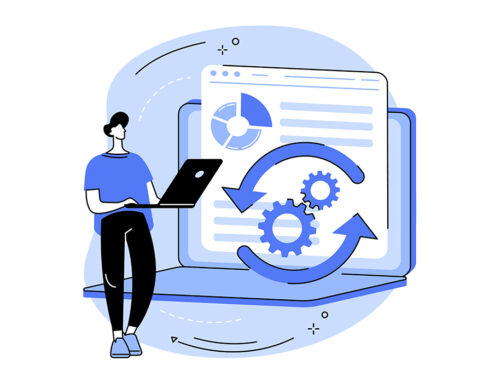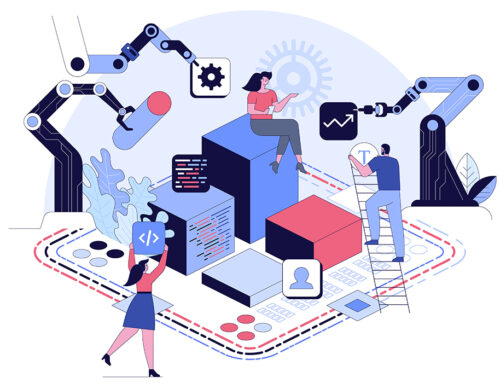This year’s first Spare Parts Summit UK (SPS UK) was held in Coventry on 12 April 2018. Attended by more than 150 field-service and logistics representatives from leading brands, the event was a coming together of ideas and an opportunity to share best strategies for ensuring customers get the right part, at the right time, in the right place. This blog post, from our partner Carousel, looks to explore the key findings from the event and what these say about the current state of the spare parts industry.
What’s all the fuss with spare parts?
As the Copperberg organisers noted: “Spare Parts is considered as the money-maker of an aftersales division. However, organisations need to adapt to a rapidly changing world and changing customer behaviours (and expectations) in order to retain the competitive edge and grow their revenue. Continuous innovation is the only key to success.”
The main driver for this change of feeling is the increasing role of the customer, or the field engineer, as is the case with spare parts.
It goes without saying that these days, people want convenience and more choice. Delivery options must suit their requirements and they also want more visibility and control of their orders than ever before. What’s prompted this change? The role of e-commerce primarily, which has transformed the ‘traditional’ supply chain, but also increased the complexity of reverse logistics and placed more importance on warehouse management and inventory
It was clear from our time at SPS UK that across the industry, brands have woken up to this shifting tide and have subsequently adjusted their strategies to the fact that the customer is now King. That’s not to say there aren’t some teething problems that still need addressing, but it’s certainly positive to see everyone heading in the right direction.
1. Aftermarket is no longer just a cost centre
Spare parts and the aftermarket is now recognised as a significant sales channel by organisations. Yet, feedback shows that creating a strong aftermarket ‘platform’ is challenging; particularly when it comes to selecting a new logistics provider to support with such strategies. This is where there can be a disconnection between those that value the initial, up-front cost, versus those that can see the potential long-term savings or benefits of a solution. Legacy systems that aren’t fully integrated, or enabled to forecast on future parts volume in support of this kind of growth, were also another key blocker we noted from attendees.
Investment and taking a long-term strategy view is critical for overcoming these issues and this first starts with alignment across an organisation. The pace of technology is advancing at a rate of knots and by focusing only on the short-term, and not making the necessary investments, companies will not only risk falling behind, but also miss out on significant revenue streams in the future too.
2. Field engineers – your key to delivering the customer promise
The final mile is likely to be the only part that the customer actually sees of the spare part purchase process, so keeping your field engineers happy is paramount. Particularly, as engineers have the only face-to-face contact with customer, they play a key role in delivering the customer experience.
Feedback from SPS UK reveals however that relationships between organisations and engineers needs to be improved. This could be caused by a misalignment between the central aftermarket strategy, and the operational implications that can impact an engineers’ ability to deliver the customer promise effectively.
Product availability, time-consuming processes and a lack of stock were all named as frustrations affecting an engineer’s ability to service, and with the retention of engineers now a critical priority, it’s clear these areas need addressing – fast. A reduction in first time fix rates and poor engineer efficiency are two things that could impact a brand’s ability to live up to its customer promise.
3. Are returns repeating on you?
The majority of those at SPS UK said they had frustrations with their returns, in particular, the impact a lack of visibility and pace were having on inventory management.
The priority for spare parts has and always will understandably be on getting the right parts to the right place first time, every time. Yet conversely, we heard that returns cycles can often be slow and disjointed, encouraging more stock holding (and higher costs) than is actually required.
The issue this can cause is a balancing act between reducing inventory levels and ensuring the right parts are available. Critically, and looking at the bigger picture, the speed of returns will impact the bottom line making returns a serious area for improvement in the future.
Final thoughts
When we attended SPS UK we looked to answer the question – are spare parts being overlooked by field service organisations?
It’s clear that there is a strong focus on getting the right engineer to the right place at the right time, however that’s only achievable if the engineer has got the parts and infrastructure they need to complete the job when they get there.
Efficient spare parts deliveries are vital for optimising processes, maximising engineer up time, speeding-up average fix time, reducing inventory stock holding, avoiding unnecessary road miles and associated costs. Most importantly however, it’s a critical part in delivering a better customer experience and achieving higher levels of satisfaction. That’s the difference between customers choosing you, over your competitor.
For more information and insights, visit: Carousel.eu/en/insights





























